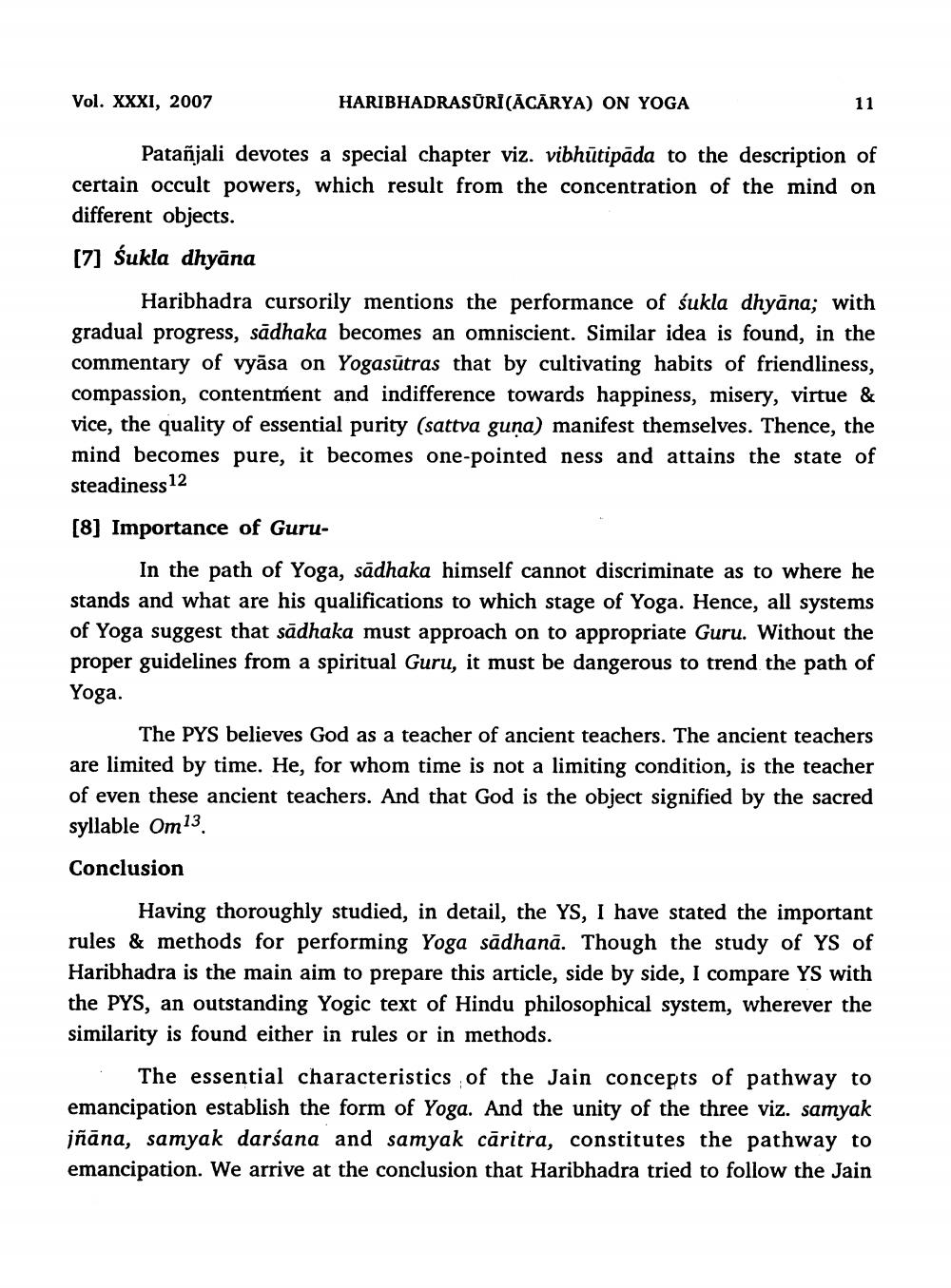________________
Vol. XXXI, 2007
HARIBHADRASŪRICĀCĀRYA) ON YOGA
Patañjali devotes a special chapter viz. vibhutipāda to the description of certain occult powers, which result from the concentration of the mind on different objects. [7] śukla dhyāna
Haribhadra cursorily mentions the performance of śukla dhyāna; with gradual progress, sādhaka becomes an omniscient. Similar idea is found, in the commentary of vyāsa on Yogasūtras that by cultivating habits of friendliness, compassion, contentment and indifference towards happiness, misery, virtue & vice, the quality of essential purity (sattva guna) manifest themselves. Thence, the mind becomes pure, it becomes one-pointed ness and attains the state of steadiness 12 [8] Importance of Guru
In the path of Yoga, sādhaka himself cannot discriminate as to where he stands and what are his qualifications to which stage of Yoga. Hence, all systems of Yoga suggest that sādhaka must approach on to appropriate Guru. Without the proper guidelines from a spiritual Guru, it must be dangerous to trend the path of Yoga.
The PYS believes God as a teacher of ancient teachers. The ancient teachers are limited by time. He, for whom time is not a limiting condition, is the teacher of even these ancient teachers. And that God is the object signified by the sacred syllable Om13
Conclusion
Having thoroughly studied, in detail, the YS, I have stated the important rules & methods for performing Yoga sādhanā. Though the study of YS of Haribhadra is the main aim to prepare this article, side by side, I compare YS with the PYS, an outstanding Yogic text of Hindu philosophical system, wherever the similarity is found either in rules or in methods.
The essential characteristics of the Jain concepts of pathway to emancipation establish the form of Yoga. And the unity of the three viz. samyak jñāna, samyak darśana and samyak cāritra, constitutes the pathway to emancipation. We arrive at the conclusion that Haribhadra tried to follow the Jain




